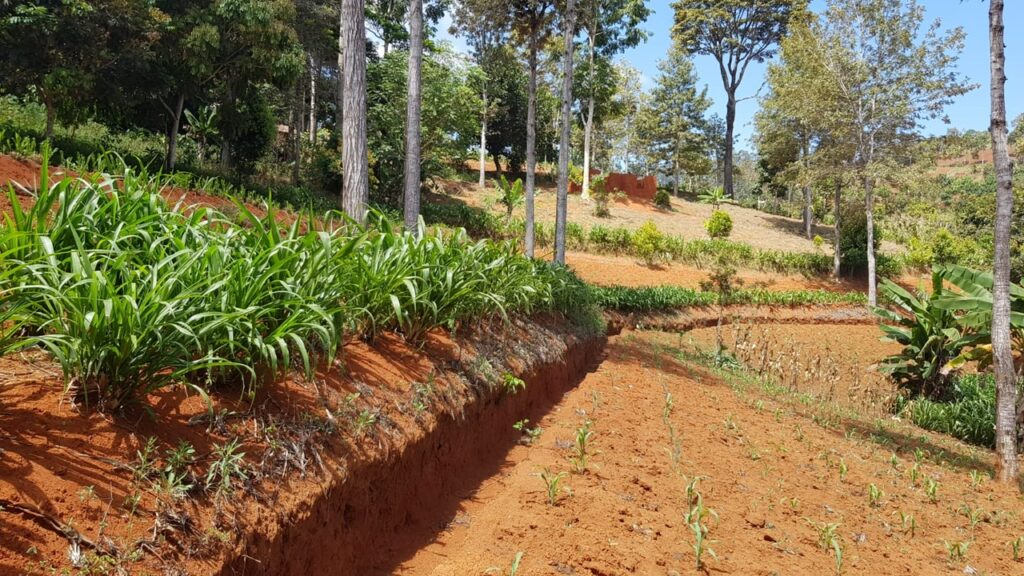Evaluating Cross-Scale Land Use and Food Security Trade-Offs in Sub Saharan Africa through Participatory Modelling
In a context of climate change, significant population growth, and rapid economic changes, achieving food and nutrition security in sub Saharan Africa remains a critical challenge. The Comprehensive Africa Agriculture Development Programme highlights the need to both diversify and sustainably increase agricultural productivity across the continent to provide adequate nutrition. However, growth in the agricultural sector may bring important environmental trade-offs. In Zambia, for example, recent research at the University of Leeds suggests that even if yields were to increase by 80% by mid-century, agricultural land area may need to increase by over 5 million ha to meet national food demand. This could come at a serious cost to biodiversity and the wider environment: although Zambia has significant designated protected areas, the National Biodiversity Strategy and Action Plan identifies agricultural expansion as a significant driver of deforestation and forest degradation.
Understanding the implications of different food system and land use trajectories for food security and biodiversity requires an interdisciplinary, cross-scale approach. We need to understand local level food demand and agricultural practices, but place these in the context of the broader scale and interrelated processes of land-use, ecological, and climatic changes. This PhD project will build on existing research at the University of Leeds, under the FoSTA Health and CGIAR ClimBeR Initiatives, to analyse trade-offs between food availability and the environment across spatial and temporal scales in Kenya and Zambia.
Working either in Western Kenya or Central Zambia, the PhD project will integrate with, and build on, ongoing research programmes. The student will use participatory modelling approaches to understand agricultural practices, food choices, and agro-ecosystem interactions at a case study level. These participatory approaches to modelling food systems will improve the contextual relevance, usability and transparency of evidence about projected future change. Such approaches aim to involve stakeholders and integrate local knowledge into the research design, the construction and calibration of models, the articulation of alternative scenarios, the interpretation of model results and in the dissemination, uptake and use of evidence (Voinov et al., 2016).
However, such local-scale data may miss the bigger picture of national, regional, and global change. The project will therefore situate this work within a broader national and regional level analysis of food system change. This may draw on a combination of crop-climate impacts (e.g. iFEED, GLAM), food access and affordability (Cost of Diet), and land use change models (e.g. Williams et al 2021). The research will engage stakeholder participants for both envisioning plausible and desirable pathways of food system change, and interpreting the outputs of modelled simulations of these pathways. We envisage that the project will focus on a mid-century time horizon, and address some combination of the following questions:
- Through what scenarios of agricultural and land use change can food and nutrition demands be met?
- What are the implications of meeting food and nutrition demand for biodiversity and agro-ecosystem services?
- What are the critical trade-offs between national commitments to biodiversity conservation and protected areas and achieving food and nutrition security?
The project would be underpinned by existing data and tools, which provide high levels of flexibility, allowing the student to take the analysis in multiple directions depending on interest. At a local level the project may build an understanding of food system dynamics and plausible pathways of change by building on existing survey and focus group data on agricultural practices or analyses of dietary preferences and food choices (from the iSPARK and FoSTA Health projects). At a national level the project could leverage existing data on agricultural productivity and nutritional availability under climate change and alternative land-use scenarios (generated through the GCRF-AFRICAP and CGIAR-ClimBeR programmes). At a regional, continental, or global level, the project could utilise flexible land-use change models created by the supervisory team to project future land-use change and understand their impacts on key habitats, biodiversity, and ecosystem services.
The project would be suited to someone with an interest in and experience of working in African food systems and with experience in land use, climate impacts or food system modelling or a broader interest in participatory approaches to modelling.

